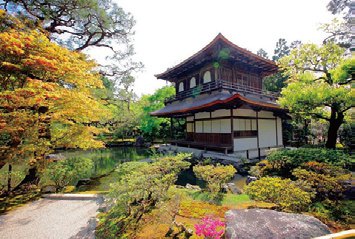Essays
The Colors of Kyoto
JeongMin Han (Faculty of Letters, 2nd Year)
Spring.
It's the time of the year when the cherry blossoms are in full bloom. Just imagine how many times the trees have blossomed up to today. Spring shows itself in every corner of Kyoto. To list a few, there is the calm and elegant Ginkakuji, the peaceful Tetsugaku no michi, the well-balanced Nanzenji, and the heroic bridge of Suirokaku which harmonizes well with nature and was built to gather water from the biwako. Cherry blossoms, the representative flower of Japan, fills Kyoto, the city that best represents Japan.
Summer.
The lively green trees reminds us of a cool summer. One of the 3 largest festivals in Japan, also known as Gion festival, is held in the center of Kyoto. You will see people dressed up in traditional yukata's strolling down the modern buildings in the city. I am sure everyone, including foreigners, will have an enjoyable time in the hot summer of Kyoto. This is one of the reasons that make Kyoto a charming historical city. It simply displays a harmony of modernization and the vigor of traditions.
Autum.
The temperature gradually winds down and the leaves begin to change colors. As most people know, Arashiyama is a famous spot for checking out autumn leaves. The autumn leaves is what makes Kyoto graceful. The bridge, Togetsukyo, completes the scenery of Arashiyama. Another beautiful spot for autumn leaves would have to be Kurama. The view of Kifune shrine and Kurama temple perfectly displays autumn. If you take the Eizan railway on the Kurama line, there is a great spot where they light up in the evening. The illumination makes it seem like you' re in an illusion.
Winter.
It somehow reminds me of Kinkakuji, which is known for its extraordinary beauty. The temple covered in snow is an all-time favorite scenery. It's not as mysterious as explained in books, but the structure made of gold foil itself gives enough of unreal vibe. You can also enjoy the beauty of the flower arrangements that accentuates the essence of flowers. I get a feeling that the stories of Kinkakuji were referring to the winter season.

Ginkakuji temple
The old traditions remain the same in the historical city of Kyoto. The city is almost like a chameleon because it holds different traits based on spring, summer, autumn, and winter. The countless temples and shrines is what makes Kyoto an elegant city. Since it was the capital for more than 1000 years, it is packed with history. It has also been the center of politics and culture; therefore, traces of history have been left in various places around the city. Its fascinating just to think that samurai's too walked along these same streets. You can feel the history with every step you take. Did you know that there are 17 World Heritages in Kyoto? Some people may think it's a sightseeing city, but it's actually a city that is constantly working hard to preserve traditions. Its amazing how the old spirits still lives through the changing times and surroundings. Kyoto is the perfect example of a cultural city that is constantly thinking of ways to live in symbiosis with the modern world without keeping the relics of the past.

